- Home
- Tove Jansson
Travelling Light
Travelling Light Read online
Travelling Light
Tove Jansson
Translated from the Swedish by
Silvester Mazzarella
Introduced by
Ali Smith
For Tooti
Contents
Title Page
Dedication
Introduction by Ali Smith
An Eightieth Birthday
The Summer Child
A Foreign City
The Woman Who Borrowed Memories
Travelling Light
The Garden of Eden
Shopping
The Forest
The PE Teacher’s Death
The Gulls
The Hothouse
Correspondence
Copyright
Introduction
by Ali Smith
“Perhaps it might interest you to know what I packed? As little as possible! I’ve always dreamed of travelling light, a small weekend bag of the sort one can casually whisk along with oneself as one walks with rapid but unhurried steps through, shall we say, the departure lounge of an airport, passing a mass of nervous people dragging along large heavy cases.”
There’s something tragically doomed – and comically too – in the determined light-heartedness of the main character in the title story of Travelling Light as he steps out, carrying “the absolute minimum”. No more emotional baggage for him, he decides. No more listening to, and by implication becoming responsible for, the fears and anxieties of others. Instead, he’ll maintain a pure and optimistic disconnection, pass through the modern world with a sweet and lightweight sense of solitude. He won’t listen to anybody’s needs; he won’t be encumbered by anybody’s story.
But what this story reveals is that there’s no such thing as disconnection; and it does this in its very form, not just in the funny, sad unfolding of its plot. “Believe me, you can’t imagine my giddy sense of freedom”. In the very act of announcing how determined he is to go solo, this man is already helplessly accompanied – by “you”, in other words, us, listening to him. Tove Jansson’s sleight of hand means that his freedom – and our own – is already disturbingly and laughingly compromised.
At the heart of Travelling Light is Jansson’s insistence that no man or woman is an island. No matter how much we may long to escape others, we can’t; and even the simplest daily act of existing in the world, living with others, never mind anything more intimate, is fraught with alienation. The collection revels in this paradox, the human longing for solitude versus the human need for contact. Can you travel light? What happens to this urge when it’s dark? Its very funny stories are deadly serious; its world is one in a state of fragmentation and breakdown, sometimes obvious, sometimes covert, but breakdown at all levels from intimate to global. In a series of surreal encounters which, on the one hand, gently nudge a reader out of any comfort zone and, on the other, deliberately smash notions of comfort into shiny broken shards, the collection is a work of fusion, of entertainment with disquietude, exhilaration with resignation. The stories ask questions about inclusion and exclusion, insiders and outsiders; they ricochet between the polar opposites of sea and land, island and mainland, foreignness and familiarity, past and future, youth and age, each one a kind of journey in itself, a symbiosis of light and dark.
Travelling Light – Resa Med Lätt Bagage in its original Swedish title – was Jansson’s fourth collection of short stories for adults; she published it in 1987, when she was seventy-three. Her first book for adults had been the short-story collection Sculptor’s Daughter, published in 1968; she would write five more collections before her death in 2001 at the age of eighty-six. In her lifetime, her international fame came as the writer and illustrator for children of the Finn Family Moomintroll, whose cheerful, day-to-day, open-natured philosophy and benign inclusivity ensures their survival, and that of everybody round them, in the deepest, darkest, most existential of Scandinavian landscapes. Now, as the work to which she devoted more than thirty years of her later life is being made available in English at long last, this earlier fame is steadily being matched by a fast-growing international appreciation of her light-footed, deep-resonating writing for adults. Very excitingly, there’s still a fair amount to come, in memoir, novel and short story form, and each new translation proves a revelation of Jansson’s literary astuteness, liberating philosophical understanding and aesthetic generosity.
The Fredrikson family, in the hilarious, unsettling “The Summer Child’, consider themselves very generous; they have openly advertised for a child from the city to come and spend the summer in their idyllic rural setting with them, for a small fee. The child who arrives is apocalyptic, “anything but childlike”. In a story which challenges the ways we narrate ourselves, the family saddles itself with Elis, a gloomy little conscience “well informed about everything that’s dying and miserable”, who makes them feel guilty about everything, from not eating their leftovers to global pollution, and pierces them with his human oddness; the story, a fable of innocence and knowledge, becomes about the very act of discomfiting others, the moral attraction and the powermongering of it. It has something of the nature of an unexploded mine about it, as does the psychologically-loaded “The Woman Who Borrowed Memories”, where an artist revisits her “starry-eyed” past; and when this past, in the form of a suffocating old friend, threatens to devour both what she was then and is now, even to write her out of her own life story, she learns exactly why we move on, why nostalgia is deathly, why we can’t and mustn’t go backwards in life.
Tove Jansson’s artwork for the original Swedish publication of Resa Med Lätt Bagage (Travelling Light), 1987
Into this heady, psychologically dizzying story, at just the right moment, comes a defusing line like this one: “the spring evening came into the room, cool and liberating”. These are stories whose interruptions and moments of change are crucial; stories made, themselves, to interrupt things both liberatingly and much more darkly, just as “The PE Teacher’s Death” interrupts its characters’ dinner-party fashionable superficialia with a death, a suicide right in the middle of things, and one that seems more meaningful, more committed to life even in the death, than the lives its characters find themselves living.
Travelling Light is also a book about the existential landscape of old age – though, as Jansson has one character point out, “there’s not as much difference as people think between the young and the old”. “A Foreign City”, one of her most unassuming and powerful stories, sees old age as a Kafkaesque desolate cityscape where “words disappear as easily as hats, as easily as faces and names." But what starts as a story of bumbling ineptitude soon transforms into one about a much more endangering and dangerous state; in the end the fundaments of communication and the restoration of lost meaning to things – and to people – become the only route of escape and survival.
Each of the three very short stories in Travelling Light – “A Foreign City”, “The Gulls” and “The Forest” – is a masterpiece of brevity. “The Gulls” is a deeply-layered tiny tale of lifeforce and murderous powerplay and possessiveness; “The Forest” an almost casual anatomising of why storytelling matters. Jansson insists throughout this collection, perhaps even more than she usually does in her writing, that landscape is never not psychological, that landscape and pyschology are vitally connected. Throughout Travelling Light, as throughout all her work, she examines why art and narrative matter to us, how and why they’re part of the human condition. But in particular, in this collection, she highlights social preconception and imprisoning judgementalism, and how art and narrative partly offer open doors out of both and are partly themselves preconditioned by both. In the opening story, “An Eightieth Birthday”, the young, naive protagonists, new to life and l
ove, worry desperately about being “the right kind of person”, being seen to understand “the right kind of art”. The real artists, though, are the dishevelled, stained outsiders, past their best, “critiqued long ago”, and the old woman whose birthday they’re celebrating, a survivor stubborn enough always to have painted trees no matter what the aesthetic fashion was, “till in the end she knew trees, the very essence of trees.” Out walking in the middle of the night with the disreputable old artists, May sees for the first time how very beautiful the city she lives in is.
This is recognisable Jansson territory; the simple, essential connection, between seeing and thinking, becomes central to the art of these stories. But the collection’s bravery lies in its radical consideration of the failures of words, of the cold-shouldering art can involve, the disconsolations of art. In fact, when it comes to both art and life, the stories are uncompromising and truthful about an inevitable disconsolation.
There is an urgency in the writing, a warning about not leaving things too late. Seeing a tree in bloom, seeing it in front of her eyes as if for the first time, “it suddenly occurred” to May “that I hadn’t loved Jonny the way I could have loved him, totally.” Travelling Light is passionate about trees and meadows, teems with unexpected, out-of-place Tarzans and jungles, teems with nature in all its seemingly tamed and uncontrollable forms. It is repeatedly coruscating about modern homogenous and desolate landscapes, fake and “flat and featureless apart from recurring groups of high-rise blocks set at an angle to the road, and petrol stations, all the ordinary roadside places, all the same, without character, monotonous as polite conversation”. In this collection Jansson has no time for politeness. She meets these paucity-revealing landscapes head-on with a lifeforce so huge and full and wild that things are bound to be explosive in the collision. But at the same time, she insists, there’s nothing romantic about trying to embrace this lifeforce, and there’s no such place as “The Isle of Bliss … so far away nothing dangerous can get to it”.
In this lies the collection’s other source of fruitful collision, between so-called romantic isolation and troubled human interaction. In “The Garden of Eden”, Viktoria, an elderly professor, arrives at an empty house in a place wholly foreign to her, opens a door on a totally new landscape and uncovers the same old colonising layers of judgementalism and powerplay as exist everywhere. She can’t not become implicated in the multilayered social interactions even in this tiny Spanish village. Her new way with old stories, her new perception about the ways in which we construct narratives about ourselves and others, opens doors on a very old story of her own, in a way that’s tragically too little, too late yet still full of a healing kind of release.
How typical of Tove Jansson, that a book which deals with such darknesses, such weighty matters, a collection so consistently concerned with people, relationships and societies in states of breakdown, at the ends of their tethers, even apocalyptically ruined, unfixably fragmented, should be one of her funniest, most unpindownably airy works. In effect it creates its funniness, and equally its sadness, out of the impossibility of detachment, the struggle for proper connection, and the surreality of both. These are stories quietly, unsensationally, going out of their way to disconcert their readers, “get them out of their tight little cliques” so they’ll “listen and understand each other a little better”, as Viktoria puts it, thinking of her own aim in getting two troubled people together in the hope that they’ll hear each other before it’s too late. “Ladies, you waste your time on inessentials. When we’ve finished our coffee, I think we should devote ourselves to the contemplation of nightfall”.
The final piece, “Correspondence”, is a story stripped back to essentials. It’s one of the closest of Jansson’s works to autobiography, a story she constructed out of the letters sent to her by a young Japanese admirer of her books. This paradoxically makes it a story which includes us too – makes it directly about the relationship of Jansson’s reader, the person holding this copy of Travelling Light in his or her hand, to Jansson herself, the writer of all the stories that have come before it. Its inclusion makes it a direct gift to us individual readers: a commentary on the paradoxical joint intimacy and solitude in the act of reading (and writing).
An interweaving of real excitement, real poetry and real loss; a story of youth and age and the limitations of both; it spells out, beautifully, through one writer’s generosity in using the words of another, the terrible alienation love reveals, the distance inherent in intimacy. It becomes a fable of what human beings can and can’t give each other. It is full of a pure love and a haunting longing. The demands of these are huge, beautiful, terrifying, unacceptable. More: something of these demands, she suggests, sits at the core of any narrative. “I can’t write my story without you.”
How lightly Jansson’s fiction traverses the wide world. How profoundly it implicates us.
Tove Jansson in Japan, 1971, with Tuulikki Pietilä (left)
Travelling Light
An Eightieth Birthday
WHEN WE ARRIVED and Jonny caught sight of the big cars parked outside Grandma’s building, he said right away that he should have worn a dark suit.
“Don’t be silly, sweetheart,” I said. “Relax. Grandma isn’t like that. People pop in and out in corduroy trousers and all sorts of stuff. She likes bohemians.”
“But that’s just it,” he said. “I’m no bohemian, I’m ordinary. I’ve no right to wear corduroys to an eightieth birthday party. And I’ve never even met her before.”
I said, “We’ll unwrap it before we go in, it’s more polite. Grandma doesn’t like opening parcels, except at Christmas.”
Choosing the present hadn’t been easy. Grandma rang up and said, “Dear child, make sure you bring your young man so I can have a look at him, but don’t go buying some expensive and unnecessary gift. At my age, I’ve got pretty much everything I want, plus better taste than most of my progeny. And I don’t want to leave a load of rubbish for others to clean up after I’m gone. Just pick out something simple and affectionate. And don’t go bringing art into it – you’ll only mess it up.”
We racked our brains. Grandma thinks of herself as so broad-minded and easygoing, but in fact she’s forever burdening the family with modest requests which, in all their simplicity, can be a real pain. It would have been easy, for example, to choose her a stylish bowl in thick glass, but no, that would have been too bourgeois and not at all affectionate.
Of course, I’d told Jonny all about Grandma and her paintings, and he was really impressed. We have one of her early sketches at home, a drawing of San Gimignano, where she went on her first grant-funded trip, before she became famous for painting trees. She often talked about San Gimignano and I always loved hearing her talk about how happy she was in that little Italian town with all its towers; how strong and free she felt when she used to wake up at dawn to work, and a signorina would push her vegetable cart through the streets and Grandma would open her window and point at what she wanted and they would understand each other perfectly and laugh, and it was hot and everything was incredibly cheap, and then Grandma would set off with her easel…
It’s a story Jonny likes, too. And then, would you believe it, the other day Jonny went off on his own and found a picture of San Gimignano in a little second-hand shop! So that’s our present. They said in the shop it was an early nineteenth-century lithograph. We didn’t think it was that special, but anyway.
“Jonny,” I said. “Let’s go in now. Just be yourself, act natural, that’s what she likes.”
There was a long line of well-wishers queuing in the doorway of Grandma’s studio. A couple of young cousins were scampering in and out, taking everyone’s coats, and we were gradually swept into the large, airy room, beautifully decorated by Grandma’s acolytes. I fixed my sights on her and steered us forward, giving Jonny’s arm a quick squeeze to calm him. In the background some low music was playing – not classical, but something specially chosen, bearing
Grandma’s personal stamp. We walked towards her. She had dressed with her usual studied nonchalance; her white hair lightly arranged in casual curls around her watchful, gracious face and clear, teasing eyes.
“This is Jonny,” I said. “Jonny, Grandma.”
“How nice of you to come,” Grandma said. “So this is Jonny. Finnish-speaking, I believe?” She smiled at him benignly. “How will you cope in an ossified old family where no one speaks anything but Swedish? And how are things, are you two married or not? All done and dusted?”
“Done but not dusted,” said Jonny boldly. Grandma laughed and I knew she liked him.
“Well, where’s your present?”
She stared at the picture of San Gimignano for a long time, remarked that we’d gone to a great deal of trouble, and flashed a quick smile. “I drew that same view,” she said, “but better.” Then, with a little gesture that was dismissive but also showed a secret understanding, she moved on.
The large table on which Grandma posed her models dominated the room. It was covered with her brocade from Barcelona and richly spread with everything from olives to cream cakes. Young family members ran about with vases they’d filled with water earlier that morning, while people stood about in groups having frenetic conversations and everyone was served a glass of champagne. Grandma sailed above all this like in a painting by Chagall, dispensing a sort of general benediction as she moved about the room dropping small pronouncements here and there. But I noticed she took care not to introduce anyone by name. Not the slightest suggestion of failing memory – just introduce yourselves, dear friends. Oh, to be as free as Grandma!

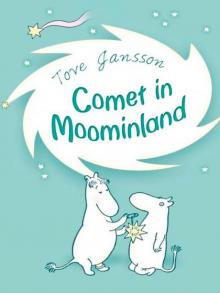 Comet in Moominland
Comet in Moominland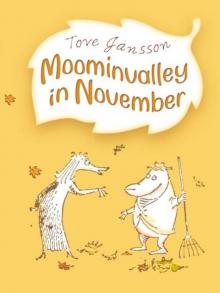 Moominvalley in November
Moominvalley in November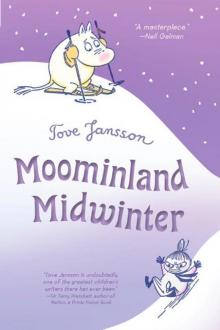 Moominland Midwinter
Moominland Midwinter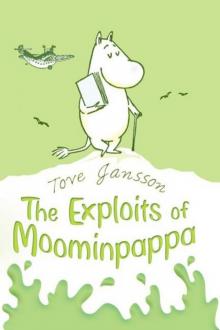 Moominpappa's Memoirs
Moominpappa's Memoirs Sculptor's Daughter
Sculptor's Daughter The Listener
The Listener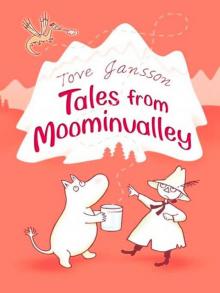 Tales From Moominvalley
Tales From Moominvalley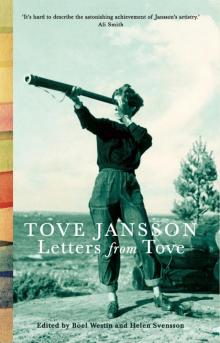 Letters from Tove
Letters from Tove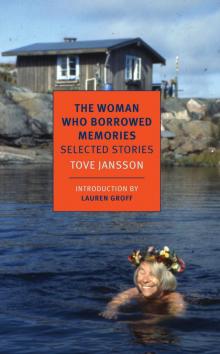 The Woman Who Borrowed Memories: Selected Stories
The Woman Who Borrowed Memories: Selected Stories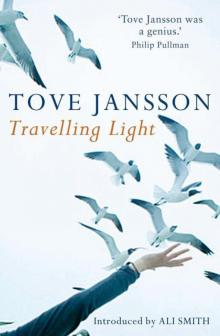 Travelling Light
Travelling Light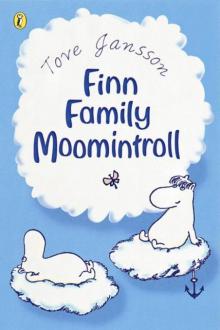 Finn Family Moomintroll
Finn Family Moomintroll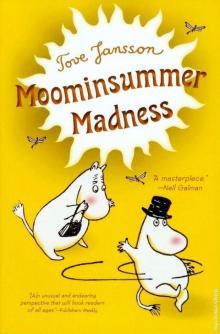 Moominsummer Madness
Moominsummer Madness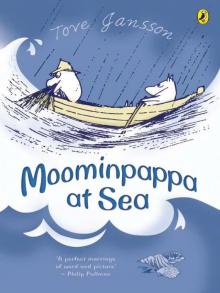 Moominpappa at Sea
Moominpappa at Sea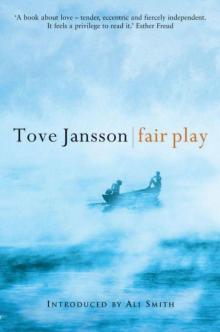 Fair Play
Fair Play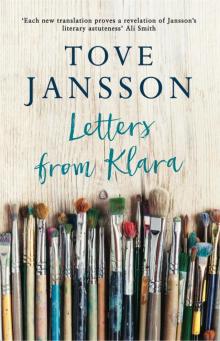 Letters From Klara
Letters From Klara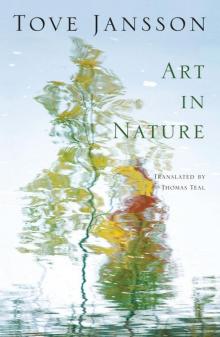 Art in Nature
Art in Nature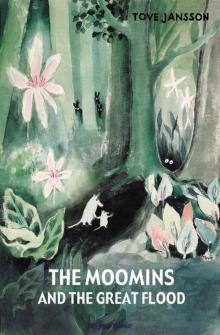 The Moomins and the Great Flood
The Moomins and the Great Flood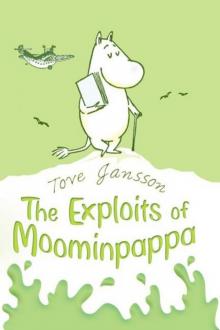 The Exploits of Moominpappa
The Exploits of Moominpappa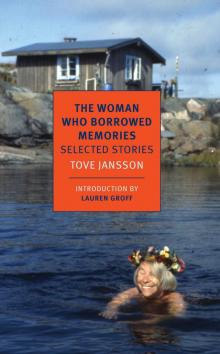 The Woman Who Borrowed Memories
The Woman Who Borrowed Memories